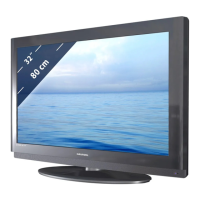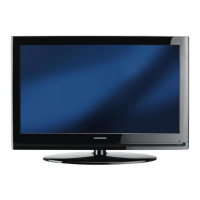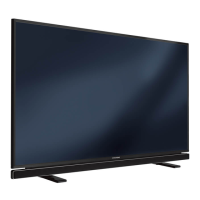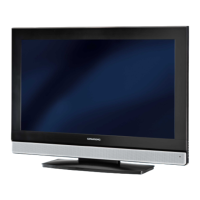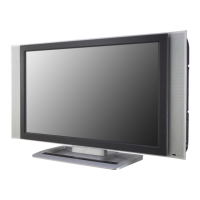
Do you have a question about the Grundig Xentia LXW 102-8625 REF and is the answer not in the manual?
| Display Technology | LED |
|---|---|
| Screen Size | 40 inches |
| Refresh Rate | 60 Hz |
| Smart TV | Yes |
| HDMI Ports | 3 |
| USB Ports | 2 |
| Wi-Fi | Yes |
| Bluetooth | Yes |
| Energy Efficiency Class | A |
| Weight | 7.5 kg |
| Operating System | Android |
| Resolution | 1920 x 1080 (Full HD) |
Safety guidelines for electrical power connection and usage to prevent hazards.
Precautions for safe placement and installation of the TV unit to prevent damage or injury.
Guidelines for safe operation, cleaning, and long-term storage to prevent electrical hazards.
Comprehensive safety warnings for installation, operation, and servicing of the television.
Explanation of LCD technology and its advantages over conventional CRT TVs.
Identification of buttons and terminals on the TV's front and back panels.
Details on the TV's input ports and their respective functions.
List and description of accessories provided with the television set.
Instructions for wall mounting and using the TV stand safely and securely.
Guidance on connecting indoor and outdoor antennas for optimal signal reception.
Explanation of the remote control buttons and their operations for TV control.
Tips for avoiding remote control issues and proper battery installation.
How to connect a VCR to the TV using composite, S-Video, or SCART cables.
Instructions for connecting a cable broadcasting receiver to the television.
Connecting camcorders or game consoles to the TV for video input.
How to connect a DVD player to the TV for audio and video playback.
Connecting a Digital TV receiver or set-top box to the TV.
Connecting a PC to the TV using D-Sub or DVI for use as a monitor.
Connecting external speakers or audio systems to the TV.
How to connect headphones for private audio listening.
Connecting external equipment via RS-232C jack for monitor control.
Instructions for turning the television set on and off using buttons or remote.
Guide to the initial setup process for new TV installations and country selection.
Basic operations for channel selection, volume control, and mute function.
Switching between TV signal and external device inputs for viewing.
How to access and navigate the TV's on-screen menu for various settings.
Configuring TV settings based on geographical location and TV system standard.
Performing automatic channel searches and managing existing channels.
Customizing picture quality parameters like brightness, contrast, and sharpness.
Customizing sound parameters like volume, balance, and equalizer settings.
Fine-tuning sound preferences using custom equalizer settings.
Selecting audio output between internal speakers and external audio systems.
Changing the language displayed in the TV's on-screen menu.
Configuring blue screen background and digital noise reduction.
Changing the display aspect ratio and zoom modes for optimal viewing.
Adjusting screen size automatically based on Wide Screen Size signal input.
Manually saving channel, color system, and sound system settings.
Arranging programs numerically and editing their names for easier access.
Fine-tuning screen settings to correct unclear pictures or visible lines.
Freezing the current video frame while allowing audio to continue playing.
Displaying multiple video sources simultaneously on the screen.
Managing auto volume level and selecting between stereo sound modes.
Restoring all TV parameters to their original factory default settings.
Configuring the clock, power on/off timers, and sleep functions.
Using teletext functions for information access and special feature controls.
Connecting external devices using the RS-232C interface for control.
Assigning a unique ID number to the TV for external control and identification.
Details on D-Sub connectors and RS-232C configurations for data transfer.
Technical specifications and command list for controlling the TV via RS232C.
Solutions for common screen and sound issues, and general operational problems.
Advice for remote control malfunctions and identifying strange noises.
Lists of resolutions and frequencies supported by the TV for various inputs.







